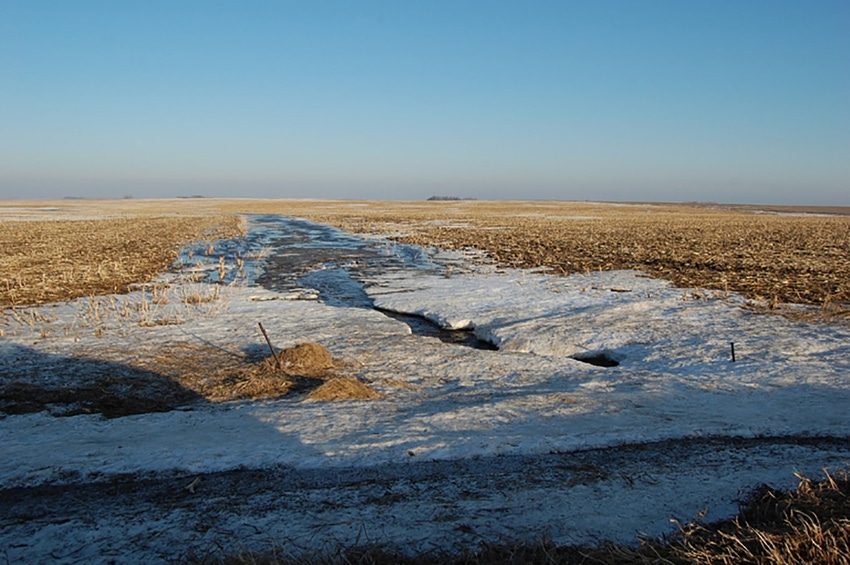When manure is surface applied to snow-covered or frozen ground, there is an increased risk for manure runoff and consequently nutrient runoff into waterways.
January 15, 2019

Hog producers are given a window of time in the fall to get manure hauled from storage facilities to fields after the crops have been harvested, but before the snow flies and the ground becomes frozen. Sometimes Mother Nature has other ideas and she slams that window shut.
Still other times, situations beyond the producer’s control pop up, not allowing producers to get the manure pits emptied when conditions are ideal. Not perfect, but sometimes manure has to be applied in less-than-ideal conditions.
When manure is surface applied to snow-covered or frozen ground, there is an increased risk for manure runoff and consequently nutrient runoff into waterways. Due to this increased risk, winter manure application is not recommended.
In the case of Iowa, state law prevents confinement facilities with 500 or more animal units from applying liquid manure on ground with an inch of snow or one-half inch of ice from Dec. 21-April 1 or on frozen ground Feb. 1-April 1, except in an emergency. If emergency application is necessary, producers must call the local Department of Natural Resources field office to report emergency applications before they apply. Additionally, if you have a National Pollutant Discharge Elimination System permit, winter application may be limited. Those with a Comprehensive Nutrient Management from Natural Resources Conservation Service need to carefully review their plan, as that does not allow winter application except in designated emergencies.
While the snow and frozen ground rules do not apply to open feedlots or poultry operations, manure application during winter months presents tough management decisions. If winter application is unavoidable, be sure to follow our Top Ten list of winter manure application considerations to ensure minimal nutrient loss and water quality impacts.
Top ten winter manure application considerations
1. Take into account soil and weather conditions, avoid applying immediately prior to a precipitation or snowmelt event.
2. Follow all separation distances; even if separation distances are followed a water quality violation may still occur, so if possible increase the setback.
3. Apply on the flattest slopes as far away from water sources as possible.
4. Avoid application on areas that drain to surface tile intakes.
5. Do not apply manure in a grassed waterway.
6. Apply to areas where soil erosion is controlled.
7. Store or stockpile manure in a way that does not cause runoff.
8. Apply to areas of less snow-cover.
9. Update your Manure Management Plan to reflect surface application rates.
10. Receive approval for surface application if subject to Master Matrix requirements for injection or incorporation.
Source: Iowa Manure Management Action Group, which is solely responsible for the information provided, and wholly owns the information. Informa Business Media and all its subsidiaries are not responsible for any of the content contained in this information asset.
You May Also Like



